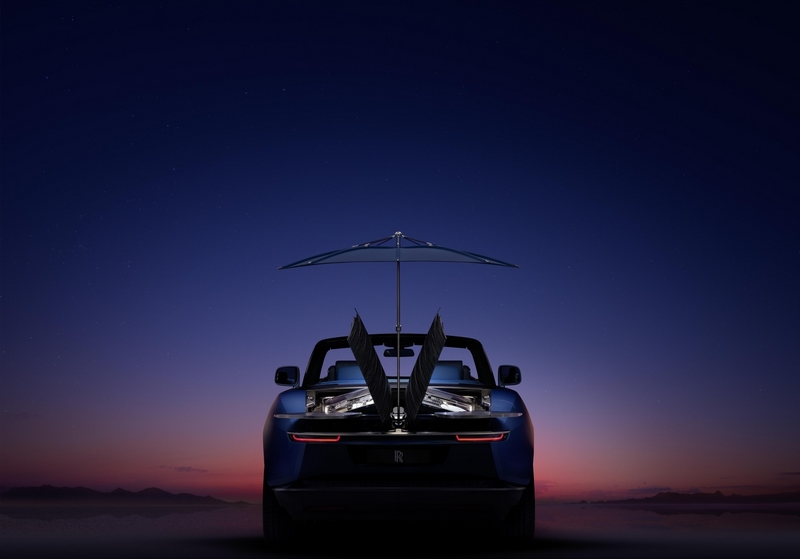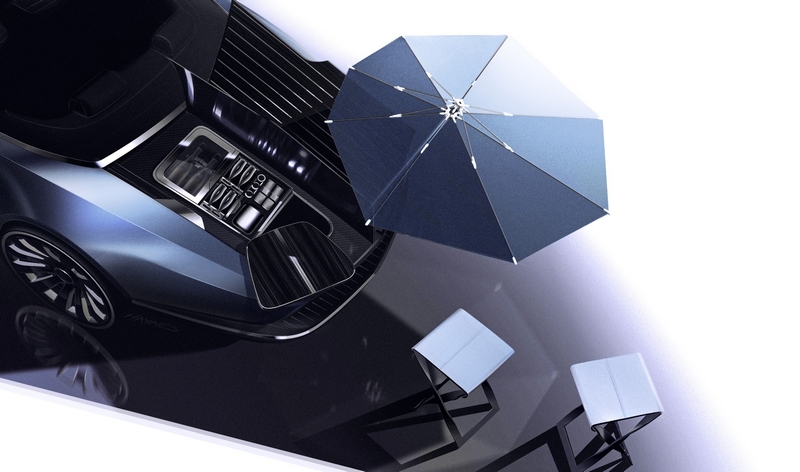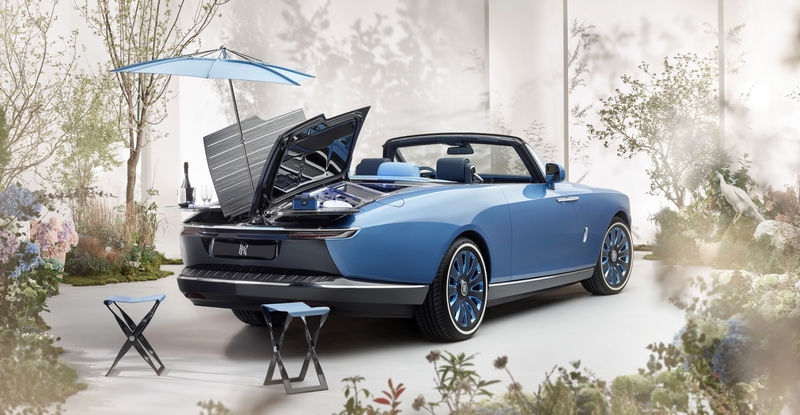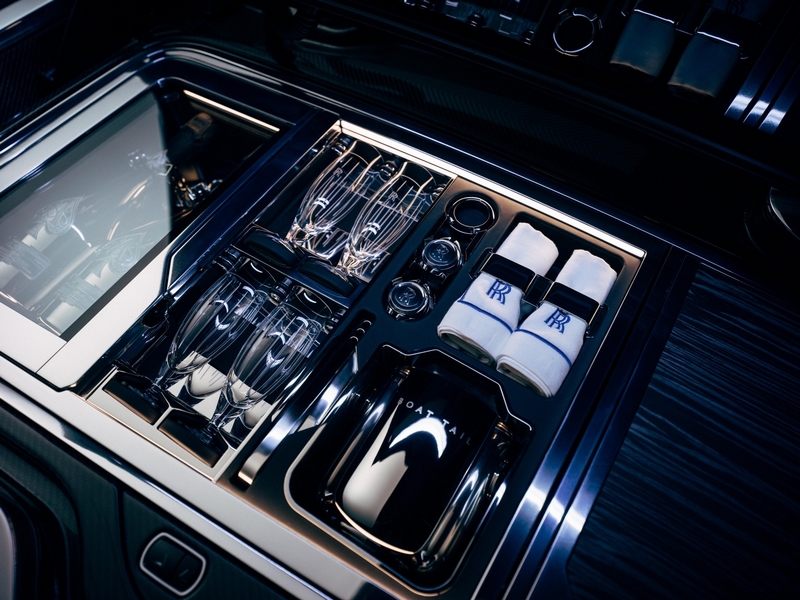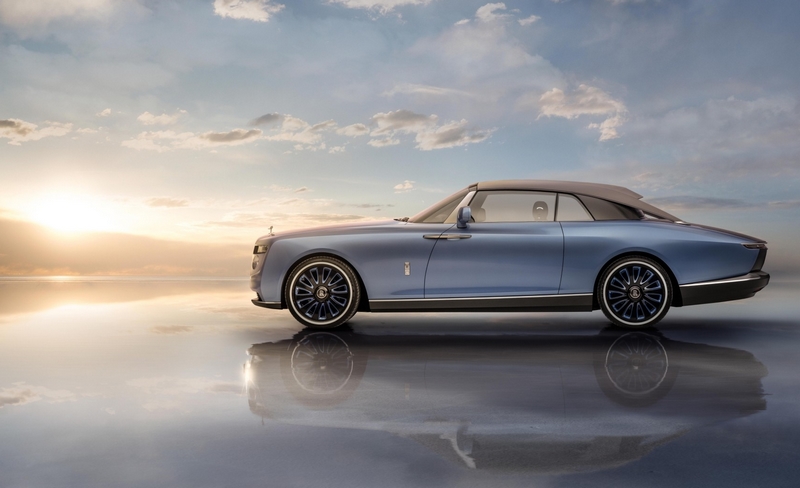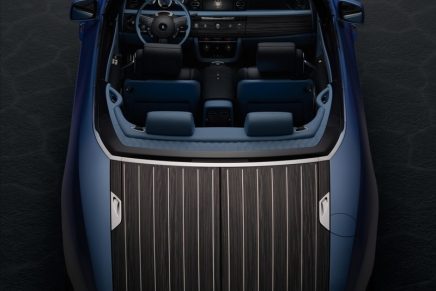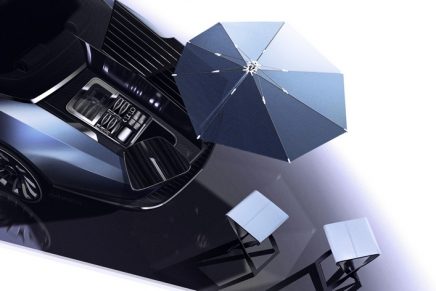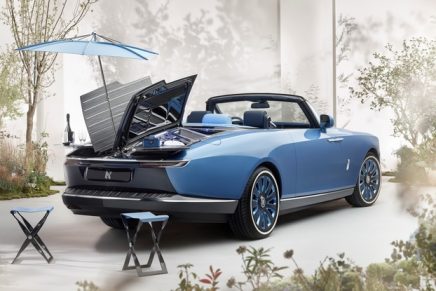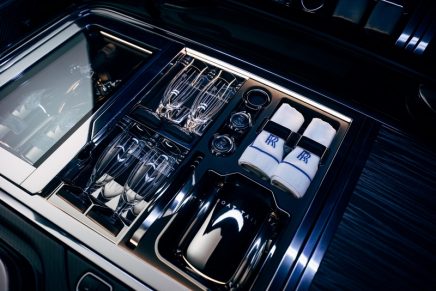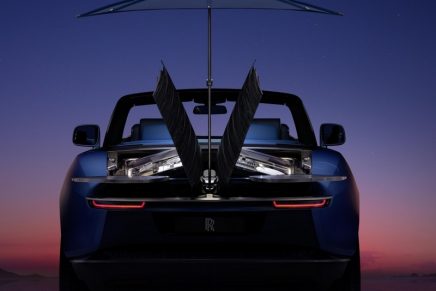With the unveiling of Rolls-Royce Boat Tail, Rolls-Royce Motor Cars confirms coachbuilding as a permanent fixture within the luxury automotive brand’s future portfolio.
Coachbuild provides freedom to move beyond the usual constraints. Normally, there is a natural ceiling to Rolls-Royce Bespoke by way of the canvas. At Rolls-Royce Coachbuild the luxury car brand breaks through that ceiling, embracing the freedom of expression afforded by coachbuilding to shape a concept directly with commissioning patrons.
In 2017, the celebrated Rolls-Royce Sweptail defined the dawn of the contemporary coachbuilding movement.
The manual techniques of coachbuilding offer new realms of design opportunity. Once the preliminary design proposal is penned by hand, the discovery of the form is enabled with a full-sized sculpture in clay, allowing hand-crafted manipulation of the expansive surfaces to perfect its shape. The process is akin to yacht building.
The new creation tells the romantic tale of Rolls-Royce’s history, echoing a Boat Tail design but not explicitly mimicking it, fusing an historical body type with a thoroughly contemporary design. At nearly 5.8m long, its generosity of proportion and clarity of surface present a graceful and relaxed stance. The front profile is centred on a new treatment of Rolls-Royce’s iconic pantheon grille and lights. The grille becomes an integral part of the front end, not an applique.
It is at the rear where the nautical references become more apparent. The aft deck, a modern interpretation of the wooden rear decks of historical Boat Tails, incorporates large swathes of wood. Caleidolegno veneer is applied in a feat of Rolls-Royce engineering; the grey and black material which is typically housed in the interior, has been specially adapted to be used on the exterior.
At the press of a button, the deck opens in a sweeping butterfly gesture, to reveal an intricate and generous hosting suite. Its complex movement was inspired by cantilever concepts explored by renowned architect Santiago Calatrava.
The chest is appointed with the perfect accoutrements for a true Rolls-Royce al fresco dining experience; one side dedicated to aperitifs, the other, cuisine, complete with cutlery engraved with the name ‘Boat Tail’, made by Christofle in Paris.
A double refrigerator has been developed to house the clients’ favourite vintages of Armand de Brignac champagne.
Elegant cradles were created to stow the specific bottle size within the refrigerator, the surrounds are highly polished and colour matched to the bottle.
While champagne is a familiar trope in the luxury world, Boat Tail’s client had a particular affinity with fine wine. A classic design element of contemporary Rolls-Royce motor cars is the stowage of Rolls-Royce umbrellas in the doors, in anticipation of possible poor weather. In a delightful twist and to heighten the languid experience of Boat Tail, a unique parasol is housed beneath the rear centre line in anticipation of fine weather. A telescopic movement opens this beautiful and whimsical canopy inversely, ensuring effortless deployment.
Cocktail tables, which elegantly rotate to mimic the offering of an attendant, open on either side of the hosting suite providing access to two highly contemporary minimalist stools, which are discretely stowed below. Designed by Rolls-Royce and created by Italian furniture maker Promemoria, the slim-line interlocking stools are formed from the same technical fibre found on the exterior of the car. The interior blue Rolls-Royce leather provides the stools’ suitably comfortable seating materials.
Rolls-Royce also collaborated with Bovet 1822 to re-imagine Rolls-Royce’s iconic centrepiece, the dashboard clock.
The result is an accomplishment never before realised in either industry. Two fine reversable timepieces, one for the lady and one for the gentleman, have been designed to be worn on the wrist, or, placed front and centre within Boat Tail’s fascia as the motor car’s clock. The two-sided timepieces required Rolls-Royce and BOVET 1822 to work side by side over the course of three years to develop a ground-up remastering of the Amadeo convertible system, the most complex undertaken to date.
813 completely new parts were created specifically for the cars.
The marque’s body-in-white, with its scalable aluminium space frame architecture, was completely reconfigured to support Boat Tail’s generous proportions, a process that took eight months in itself. As ever, the 15-speaker Bespoke Rolls-Royce Audio System was intended from the motor car’s inception, but the spaceframe architecture was exploited differently.
Rolls-Royce’s existing product portfolio use a specially designed sill section of the architecture as the resonance chambers for the sound system’s bass speakers. In Boat Tail, the entire floor structure is utilised, creating an exceptional audio experience for the client.
To support the complex requirements of the hosting suite to the rear of Boat Tail, a unique electronic treatment was required. Five electronic control units (ECUs) were created for the rear of the car alone – a process that required a completely redesigned, dedicated wiring harness, which was the product of nine months of intensive research and development. Only then was it possible for the aft deck lids to open to an appropriate 67-degree angle, incorporate a highly secure locking mechanism and integrate a total climate control system to the rear hosting suite to preserve any cuisine stowed on board.
The inside temperature of the hosting suite was a specific consideration. Boat Tail was created in anticipation of fair weather, so measures needed to be taken to ensure that heat absorption did not adversely affect the contents of the suite, which could include food, liquids and of course champagne. To that end, two fans are mounted in the lower section of the hosting suite to dissipate heat.
As Boat Tail is a fully homologated, road-legal motor car that was created to be driven, it was only fully released by the marque once it had undergone the same rigorous dynamic testing as all other Rolls-Royces, including high speed analysis to ensure the contents of the rear hosting suite are sufficiently fastened and therefore silent under power.

